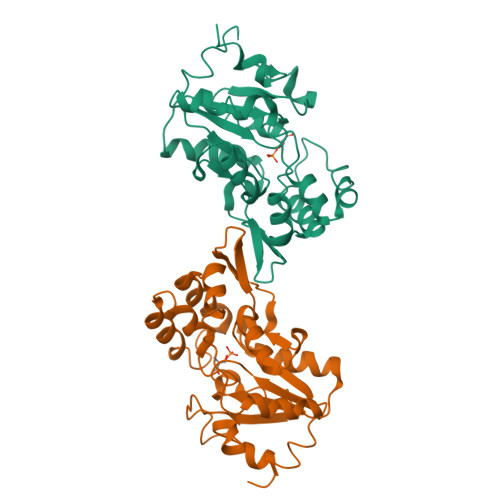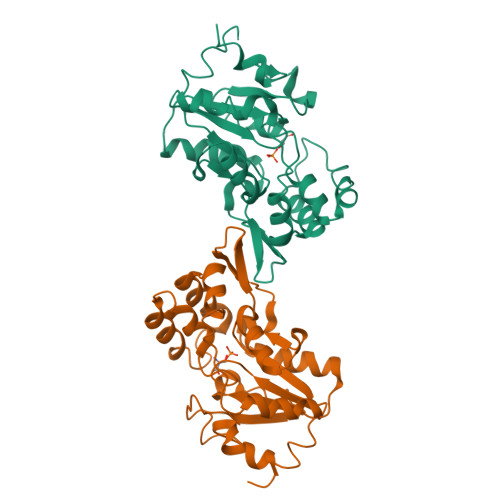Molecular basis for the local conformational rearrangement of human phosphoserine phosphatase
Kim, H.Y., Heo, Y.S., Kim, J.H., Park, M.H., Moon, J., Kim, E., Kwon, D., Yoon, J., Shin, D., Jeong, E.J., Park, S.Y., Lee, T.G., Jeon, Y.H., Ro, S., Cho, J.M., Hwang, K.Y.(2002) J Biological Chem 277: 46651-46658
- PubMed: 12213811
- DOI: https://doi.org/10.1074/jbc.M204866200
- Primary Citation of Related Structures:
1L8L, 1L8O - PubMed Abstract:
Human phosphoserine phosphatase (HPSP) regulates the levels of glycine and d-serine, the putative co-agonists for the glycine site of the NMDA receptor in the brain. Here, we describe the first crystal structures of the HPSP in complexes with the competitive inhibitor 2-amino-3-phosphonopropionic acid (AP3) at 2.5 A, and the phosphate ion (Pi) and the product uncompetitive inhibitor l-serine (HPSP.l-Ser.Pi) at 2.8 A. The complex structures reveal that the open-closed environmental change of the active site, generated by local rearrangement of the alpha-helical bundle domain, is important to substrate recognition and hydrolysis. The maximal extent of this structural rearrangement is shown to be about 13 A at the L4 loop and about 25 degrees at the helix alpha3. Both the structural change and mutagenesis data suggest that Arg-65 and Glu-29 play an important role in the binding of the substrate. Interestingly, the AP3 binding mode turns out to be significantly different from that of the natural substrate, phospho-l-serine, and the HPSP.l-Ser.Pi structure provides a structural basis for the feedback control mechanism of serine. These analyses allow us to provide a clear model for the mechanism of HPSP and a framework for structure-based drug development.
Organizational Affiliation:
Divison of Drug Discovery, CrystalGenomics Incorporated, Daeduck Biocommunity, Jeonmin-dong, Yuseong-gu, Taejeon City, South Korea 305-600.


















